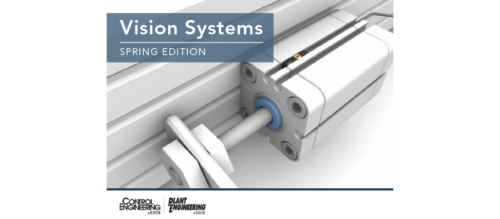Go below the surface to monitor motor temperature
Using a digital infrared thermometer to check motor bearing temperature can help monitor winding temperature.
“We had a motor rewound, and now that it’s back in service it’s running hot. The frame is getting so hot that we can’t put our hands on it. Did the service center rewind the motor incorrectly?”
Has this ever happened to you? After installing a freshly rewound motor, your maintenance crew tells you it’s running hot. Although no design change was involved and the test results look good, you’re on the verge of calling the service center to demand another rewind.
Before picking up the phone, though, you should investigate for yourself to see if there’s really a problem. Quite possibly the motor always ran “hot,” even when it was in good working order. It’s also unlikely that anyone on-site ever checked for this by touching the frame.
You can’t tell by frame temperature
There’s no way to determine the winding temperature of a motor just by feeling the frame. Good practice and safety considerations dictate that the temperature of any part of a motor should be checked with a temperature measuring device. The maximum temperature rating, based on the class of insulation, applies to the winding temperature at the hottest spot inside the motor. As a general rule, the temperature of the frame can be 20 to 40 C cooler (less or more), depending on the design of the frame and the enclosure.
Insulation class
The insulation class of a winding is determined by the maximum temperature it can withstand before complete breakdown. Many motors manufactured today use a Class F (155 C) system. Most service centers use a Class H (180 C) system on all rewinds. Assuming that the ambient temperature is 40 C, NEMA Standards MG 1 states that at 1.0 service factor, the maximum winding temperature rise above ambient for a Class F system is 105 C.
It’s very important to remember that even though the insulation system may be able to withstand very high temperatures, for every 10 C rise in total winding temperature, the insulation life will be cut in half.
Example
Though it may seem counterintuitive, the frame can be quite hot even if the motor is running perfectly fine. As an example, assume a high-efficiency design motor with Class F insulation has a 40 C ambient temperature and operates with a Class B temperature rise—i.e., an 80 C winding temperature rise.
At full load, that means the total winding temperature would be somewhere around 120 C (80 C + 40 C), well below the design limit for the Class F insulation. If we estimate that the frame temperature is 40 C lower than the winding temperature (pretty liberal), then the surface temperature of the frame is going to be about 80 C, or 176 F. Suffice it to say that not many people could or should hold their hand on a frame that hot for any length of time.
Check the amps
The best way to determine if the motor is running properly is to check the current draw with an ammeter. If the current is less than or equal to the nameplate current, then the motor is probably not overheating unless the ventilation system is not providing enough cooling air.
If the current is higher than the nameplate reading, then it’s possible that the motor is running too hot. Overloading, high or low voltage, restricted ventilation, or high ambient temperatures are the most common causes of motor overheating.
Older motors
In general, the old NEMA U-frame motors ran cooler than today’s T-frames, even those with a high-efficiency rating, mainly because their insulation systems had lower temperature ratings–e.g., Class A (105 C). If a T-frame replaces a U-frame motor, it can be alarming to see how much hotter it runs, even though it’s actually running more efficiently than an old U-frame.
Explosion-proof motors
In some cases, it’s very important that the surface temperature of the motor frame be kept somewhat cool. For explosion-proof motors, the surface temperature must be below the ignition point of the hazardous materials in the environment. Some of these motors come equipped with temperature sensors that will trip the motor offline when the winding temperature exceeds a certain level. In the U.S., UL sets the standard temperatures based on the gas, vapor, or dust present in the environment. However, there is no standard for other general-purpose motors.
Conclusion
The best way to determine if a motor is running within a safe operating temperature is to monitor its winding temperature with temperature sensors like thermostats or resistance temperature detectors. As mentioned before, you can also monitor the current to get a basic idea of how the motor is running.
Relying solely on the surface temperature of the frame, however, is not an accurate or safe way to determine the “safe” operating temperature of the motor winding.
Bishop is a senior technical support specialist at the Electrical Apparatus Service Association (EASA), St. Louis, Mo.; 314-993-2220 (phone); 314-993-1269 (fax); www.easa.com; easainfo(at)easa.com. EASA is an international trade association of more than 1,900 firms in 58 countries that sell and service electrical, electronic, and mechanical apparatus.
Do you have experience and expertise with the topics mentioned in this content? You should consider contributing to our CFE Media editorial team and getting the recognition you and your company deserve. Click here to start this process.


